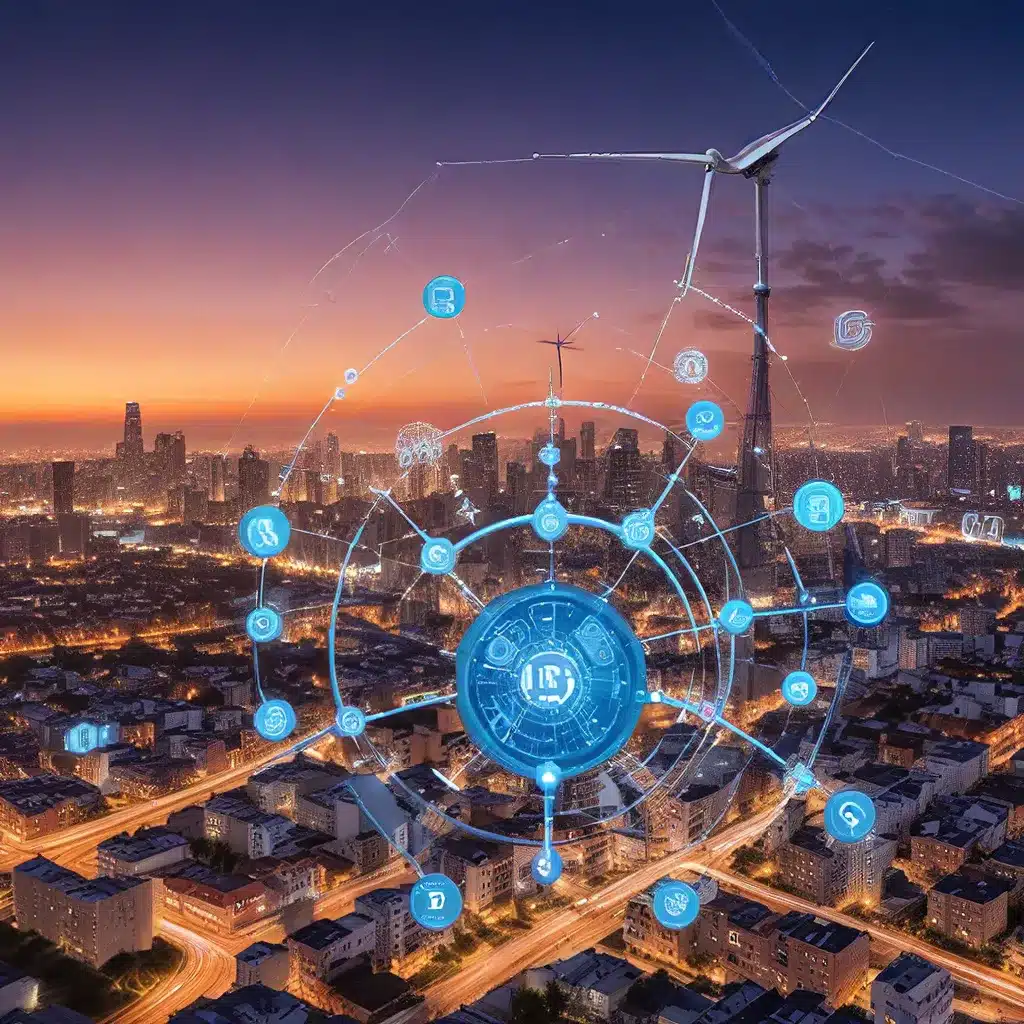
Unlocking the Potential of IoT with Sustainable Power Solutions
The Internet of Things (IoT) has revolutionized the way we interact with the world around us, transforming industries from manufacturing to healthcare. As the IoT ecosystem continues to expand, the demand for energy-efficient sensor networks and reliable power management has become increasingly crucial.
Sensor networks are the backbone of the IoT, enabling the seamless collection and transmission of data from a multitude of devices. However, powering these sensor networks can be a significant challenge, particularly in remote or hard-to-access locations. Energy-efficient sensor design and intelligent power management have emerged as critical areas of innovation, paving the way for a more sustainable and reliable IoT ecosystem.
Infineon Technologies AG, a leading semiconductor manufacturer, has been at the forefront of this revolution, providing advanced power semiconductor solutions and AI-powered energy management technologies to address the growing energy demands of the IoT.
Optimizing Sensor Power Consumption
One of the key challenges in sensor network design is minimizing power consumption while maintaining the required functionality and performance. This is especially crucial for battery-powered or energy-harvesting sensors, where energy efficiency directly impacts the device’s operational lifespan and maintenance requirements.
Innovations in low-power microcontrollers (MCUs), energy-efficient analog front-ends (AFEs), and advanced power management integrated circuits (PMICs) have played a significant role in reducing the power consumption of sensor nodes. These technologies enable duty-cycling, power gating, and dynamic voltage and frequency scaling (DVFS) techniques, allowing sensor nodes to operate in low-power modes when not actively sensing or transmitting data.
Moreover, the integration of energy-harvesting capabilities, such as photovoltaic cells, thermoelectric generators, or piezoelectric transducers, further enhances the energy autonomy of sensor nodes, reducing the need for battery replacement or wired power connections.
Intelligent Power Management for IoT Networks
As the IoT ecosystem grows, managing the power consumption and energy supply of distributed sensor networks has become increasingly complex. Centralized power management approaches, where a single control unit oversees the entire network, can be inefficient and prone to bottlenecks.
Distributed power management strategies, enabled by edge computing and AI-powered algorithms, have emerged as a more scalable and resilient solution. These approaches leverage sensor nodes with embedded processing capabilities to make localized decisions about power management, optimizing energy consumption and load balancing based on real-time data and environmental conditions.
Sensor-networks.org has been at the forefront of research and development in this area, exploring innovative techniques such as hierarchical power management, predictive energy models, and decentralized load balancing. These advancements help ensure a reliable and energy-efficient IoT infrastructure, capable of adapting to changing environmental and operational demands.
Securing the IoT Energy Supply
The cybersecurity of IoT systems is a critical concern, and energy management is no exception. Malicious actors could target the power supply of sensor networks, disrupting their functionality and compromising the integrity of the entire IoT ecosystem.
Secure power supply design, encrypted communication protocols, and tamper-resistant hardware are essential in safeguarding the IoT energy infrastructure. Infineon’s AIROC™ CYW5459X portfolio, for instance, integrates advanced cryptographic accelerators and secure boot mechanisms to enhance the security of wireless IoT connectivity solutions.
Additionally, distributed energy management strategies, leveraging blockchain technology and decentralized authentication, can help mitigate the risks of centralized points of failure and unauthorized access. By embedding security features into the power management architecture, IoT deployments can ensure the resilience and trustworthiness of their energy supply.
The Road Ahead: Powering the Future of IoT
As the IoT continues to evolve, the demand for energy-efficient sensor networks and reliable power management will only grow. Advancements in low-power semiconductor technologies, energy-harvesting techniques, and AI-driven power optimization algorithms will be crucial in meeting the increasing energy requirements of the IoT ecosystem.
Infineon Technologies AG, with its extensive expertise in power semiconductors and AI-enabled solutions, is well-positioned to drive this evolution. By partnering with sensor network developers, IoT solution providers, and research institutions, Infineon is shaping the future of sustainable and secure IoT power management.
The transformative potential of the IoT is undeniable, but its success hinges on the ability to power the underlying sensor networks efficiently and reliably. Through continuous innovation in energy-efficient sensor design and intelligent power management, the IoT ecosystem can unlock new levels of sustainability, reliability, and scalability, ultimately paving the way for a more connected and resource-efficient world.